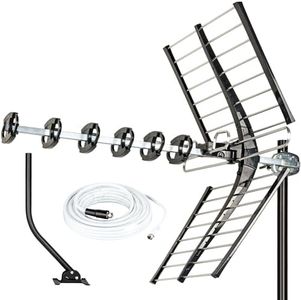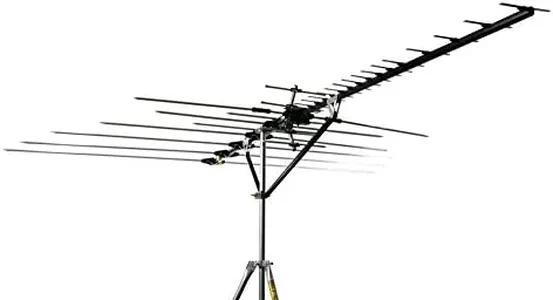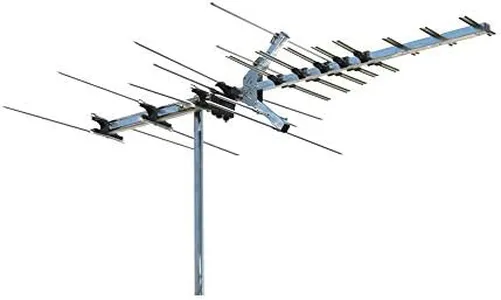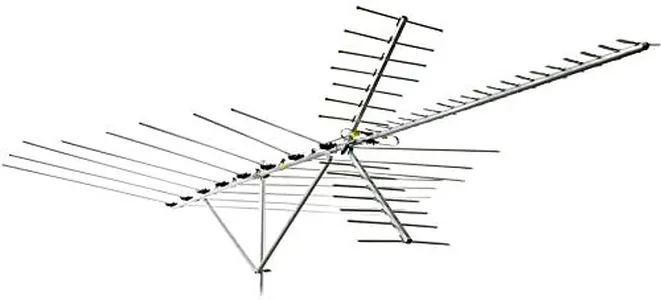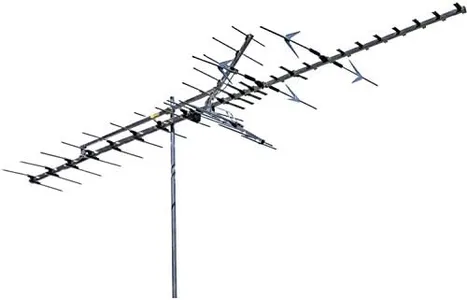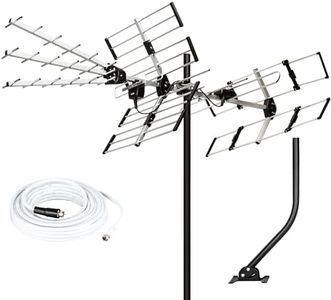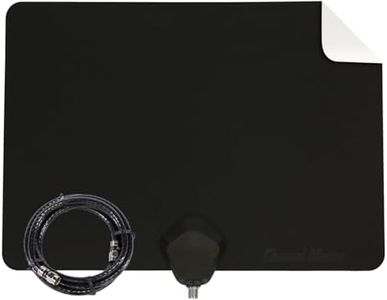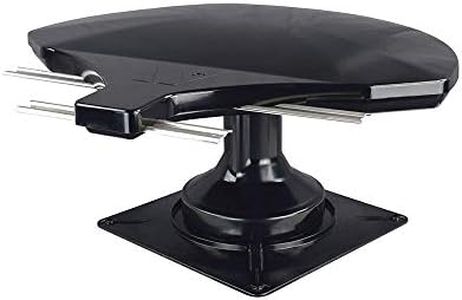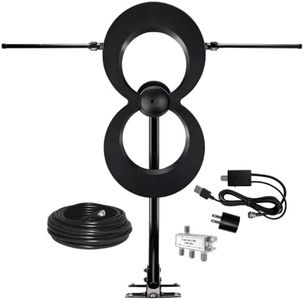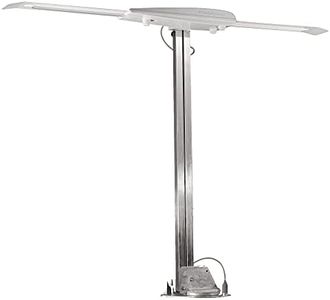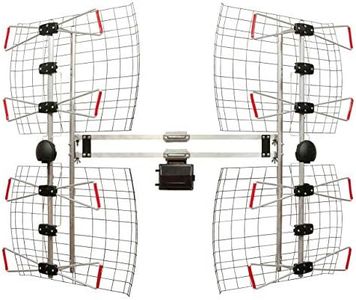10 Best Tv Antennas 2025 in the United States
Our technology thoroughly searches through the online shopping world, reviewing hundreds of sites. We then process and analyze this information, updating in real-time to bring you the latest top-rated products. This way, you always get the best and most current options available.

Our Top Picks
Winner
Channel Master CM-5020 Directional Outdoor TV Antenna 100 Mile Range Masterpiece Series
Most important from
425 reviews
The Channel Master CM-5020 is a directional outdoor TV antenna designed for those looking to enhance their television reception over long distances. With an impressive range of up to 100 miles, it caters well to users living in rural areas or regions far from broadcast towers. The antenna operates on both VHF and UHF frequencies, which makes it versatile for receiving various channels. Its gain ratings of 10dB for VHF and 16dB for UHF signify strong signal reception that can improve the quality of your viewing experience.
Being an outdoor antenna, it is built to withstand harsh weather conditions, with a wind resistance rating of 30 lbs at speeds of 100 mph, which adds to its durability. The front-to-back ratio of 17dB indicates it does a decent job of isolating signals coming from the front compared to those from the rear, which can limit interference from unwanted signals.
However, the CM-5020 is large and might require significant installation space, given its installed dimensions of 116 x 101.5 x 20 inches. This could be a drawback for users with limited installation options. Additionally, as a directional antenna, it must be pointed toward the signal source for optimal performance, meaning it may not be suitable for areas with multiple broadcast towers in different directions. Some users might find that installation can be a bit complex unless they are comfortable with outdoor mounting.
Most important from
425 reviews
Winegard Platinum Series HD7694P Long Range TV Antenna (Outdoor / Attic, 4K Ultra-HD Ready, ATSC 3.0 Ready, High-VHF / UHF) - 45 Mile Range HD Antenna
Most important from
1474 reviews
The Winegard Platinum Series HD7694P is an outdoor/attic TV antenna designed for long-range reception, offering a signal range of 45 miles. This antenna is capable of receiving both High-VHF and UHF digital TV signals, providing high gain on both frequencies. It is directional, meaning it needs to be pointed towards the broadcast towers for optimal performance, which can require some effort during installation.
To boost the range and improve signal reliability, users can pair it with an amplifier like the Winegard Boost XT LNA-200. The antenna is 4K Ultra-HD and ATSC 3.0 ready, ensuring it can handle future advancements in broadcasting technology, including higher frame rates and 3D television. Installation involves mounting the antenna outdoors or in the attic, which may be cumbersome due to its size and weight (6.7 pounds). Users can enjoy free over-the-air (OTA) programming, including local news, weather, sports, and top-rated shows.
Winegard's long-standing reputation in the industry and the product's solid customer reviews further support its reliability and performance. However, the directional nature means it might not be ideal for users in areas with multiple broadcasting towers in different directions. Additionally, the 45-mile range might not be sufficient for users in very remote locations. This antenna is a strong choice for those looking for robust signal reception for both VHF and UHF channels, provided they are in an area where a directional antenna can be effectively used.
Most important from
1474 reviews
Channel Master EXTREMEtenna - Multi-Directional Outdoor HDTV Digital Antenna, 80+ Mile Range, 8-Bay Bowtie, 180° Wide-Angle Reception, Industry-Leading Reception Power, UHF/VHF Support for Free OTA TV
Most important from
2445 reviews
The Channel Master EXTREMEtenna Long Range Multi-Directional Outdoor TV Antenna (CM-4228HD) packs a lot of impressive features for users looking to maximize their TV reception. With an extensive 80-mile range, it is well-suited for those in rural or suburban areas who want to access free HDTV channels without relying on cable or satellite subscriptions. The multi-directional design allows for a 180-degree reception span, which can be particularly beneficial in areas with signals coming from multiple directions. This characteristic reduces the need for constant readjustments and can capture a variety of channels effectively.
The antenna supports uncompressed 1080i HDTV broadcasts, ensuring high-quality video and audio, which is perfect for those who prioritize a clear and crisp viewing experience. Installation is made simpler as the antenna comes preassembled with included mounting hardware, though it’s important to note that the mast and coaxial cable are sold separately. The compact size facilitates versatile installation options, including on the roof, chimney, eave, wall, attic, or balcony. At 10 pounds, it’s relatively lightweight for its size, making it manageable to handle during installation.
However, potential buyers should consider that while it is designed for outdoor use, placing it in an attic might reduce the effective range due to potential obstructions. The antenna is non-amplified, which means it might not perform as well in areas with very weak signals compared to an amplified model. Nevertheless, users generally find it to be a reliable and effective solution for their HDTV needs. Those living far from broadcast towers or in areas with varied signal directions will likely benefit the most from this product.
Most important from
2445 reviews
Buying Guide for the Best Tv Antennas
Choosing the right TV antenna can significantly enhance your television viewing experience by providing access to a wide range of channels with clear reception. The key to selecting the best TV antenna for your needs is understanding the various specifications and how they relate to your specific situation. By considering factors such as signal range, antenna type, and installation options, you can make an informed decision that ensures you receive the best possible signal quality and channel selection.FAQ
Most Popular Categories Right Now
